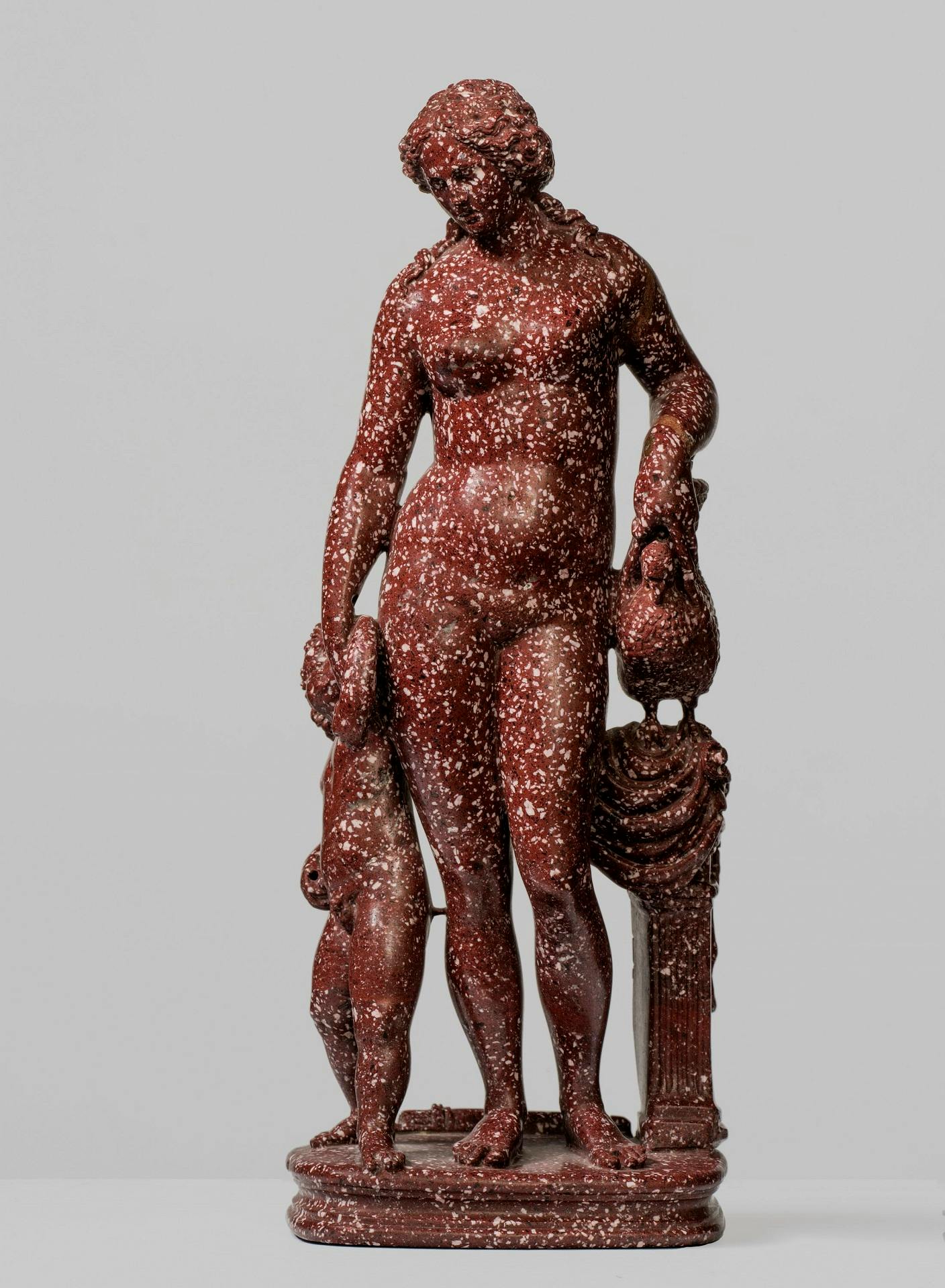Venus and Cupid
Pier Maria Serbaldi da Pescia (ca.1455 - ca.1522 )
ΠΕΤΡΟΣ / ΜΑ / ΡΙΑΣ / ΕΠΟΙΕΙ (Petros/Ma/rias/epoiei)
The group sculpture is composed of the goddess Venus standing, naked, turned toward Cupid and holding his arm to prevent him throwing the arrows that he is holding in his right hand, extracted from the quiver placed on the ground (now lost). The goddess is holding the wings of a bird (perhaps the dove she considers to be sacred) with her left hand, resting on a stele, which is partially covered by a cloak, on which the Greek inscription “ΠΕΤΡΟΣ / ΜΑ / ΡΙΑΣ / ΕΠΟΙΕΙ” (by Pietro Maria) can be seen. Its small size makes it suitable for a princely study.
The name in Greek is Pier Maria Serbaldi da Pescia, known as Tagliacarne, from his master’s name. Sources attribute him with having given new impetus to the difficult art of carving porphyry and these are qualities for which Vasari admired and recognized the artist. The practice of carving, begun by Serbaldi in Florence, where he was in contact with Lorenzo the Magnificent, was developed in Rome during the pontificate of Leo X, where the artist was able to study ancient sculptures. In fact, Vasari called him a “great imitator of ancient things”, confirming the reputation that Serbaldi enjoyed, in large part due to his study of classical art. It is thought that the artist of this porphyry group was inspired by a marble sculpture, present in the Vatican, the Venus Felix from the 2nd century AD, which shows the goddess accompanied by a winged cupid. What is certain is that the small sculpture competes with the masterpieces of classical sculpture, in terms of beauty and quality.
